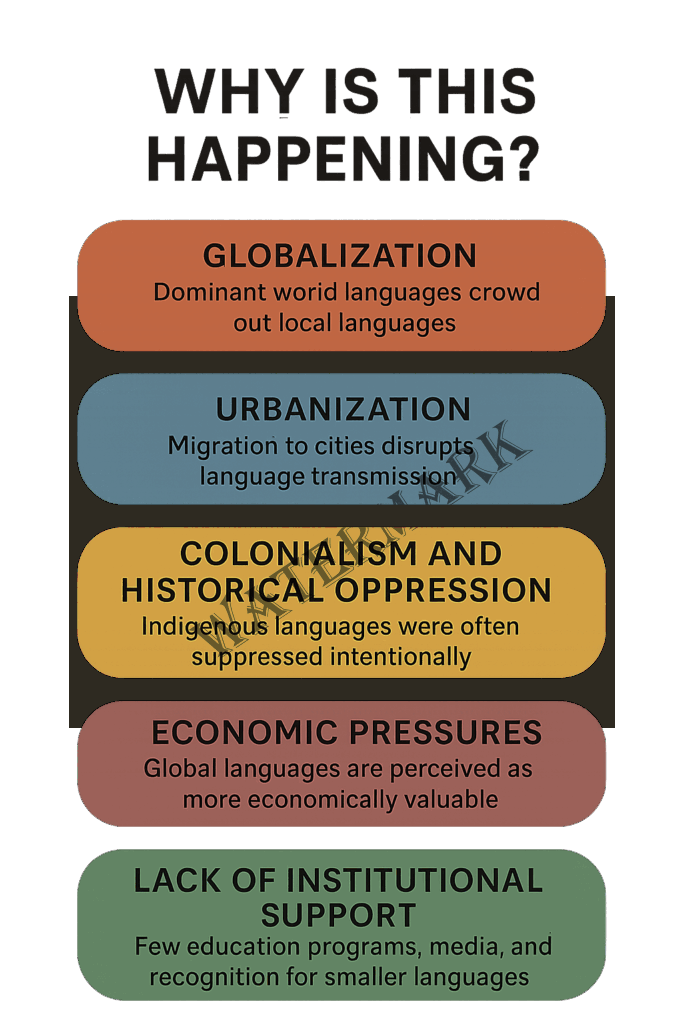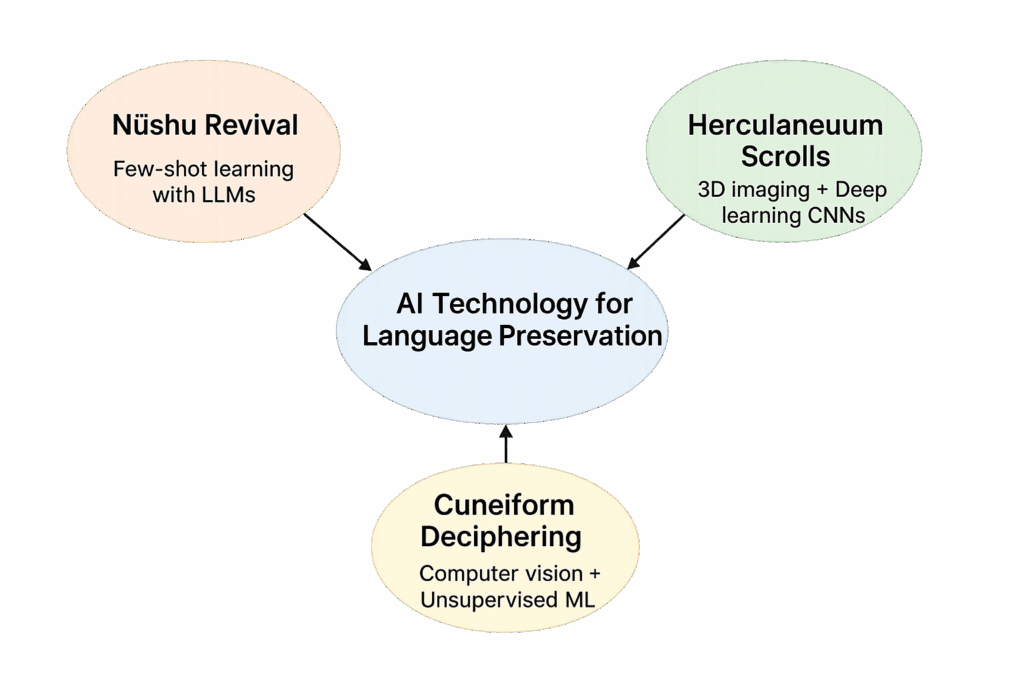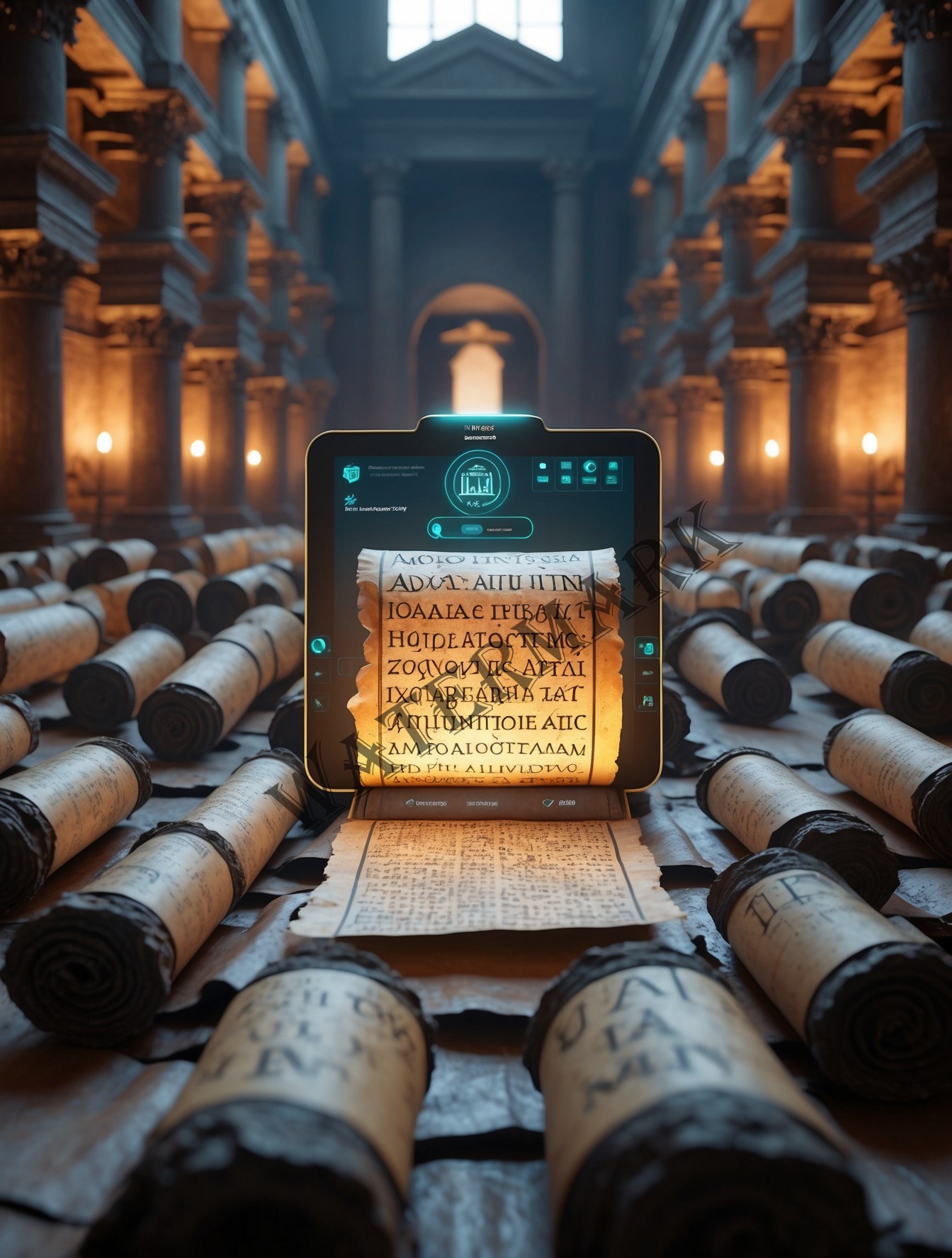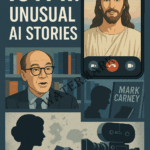Introduction
“When a language dies, a way of understanding the world dies with it.”
— Wade Davis, Anthropologist and Ethnobotanist
In the dense rainforests of northeastern Australia, the Dyirbal people once spoke a language so intricate that it had two entire vocabularies — one used in everyday life, and another, more formal version reserved for speaking to certain relatives. It was a language of nuance, of deep cultural respect, and it carried stories that stretched back thousands of years.
But by the early 21st century, Dyirbal was dying. Fewer than a handful of elders could still speak it fluently. And with each funeral, another thread in the vast tapestry of human knowledge was quietly, irreversibly lost.
Then something remarkable happened.
A group of linguists, armed with just a few surviving recordings and texts, partnered with AI researchers to create a model capable of analyzing and reconstructing elements of Dyirbal grammar and vocabulary. The AI couldn’t save the language on its own — but it could help document it far more quickly and thoroughly than any human team could manage. Through machine learning, the delicate structures of Dyirbal were mapped, taught, and preserved for future generations to study and, hopefully, speak again.
This wasn’t science fiction or a tech fantasy. It was a real-world demonstration that technology, so often blamed for cultural erosion, could also become a surprising ally in the fight to protect human heritage.
And Dyirbal was just the beginning.
Around the world, thousands of endangered and lost languages are now finding a second chance — thanks not just to passionate linguists and communities, but to Artificial Intelligence. AI models are uncovering ancient scripts, resurrecting forgotten tongues, and piecing together histories long thought lost to time.
Today, we’re diving into the fascinating, hopeful, and sometimes complicated world where AI meets endangered languages — and where the future of humanity’s oldest stories may just depend on our newest technologies.
The Silent Crisis of Language Extinction
Every two weeks, a language falls silent forever. This isn’t just a loss of words but of culture, history, and identity. Traditional methods of language preservation—like documentation and teaching—are invaluable but often insufficient against the tide of globalization and modernization.
The Silent Crisis of Language Extinction
Imagine losing not just a way of speaking, but an entire way of seeing the world. That’s what happens when a language dies — and it’s happening far more often than most people realize.
According to UNESCO, one language disappears every two weeks. By the end of this century, nearly half of the world’s 7,000 languages could be extinct unless urgent action is taken.
Here are just a few powerful examples:
- Eyak (Alaska): In 2008, the last native speaker of Eyak, Marie Smith Jones, passed away. With her, a lineage of oral tradition stretching back thousands of years was silenced.
- Manx (Isle of Man): Declared “extinct” in 1974 when its last native speaker died, but recently revived through a passionate community movement — now with the help of AI tools.
- Bo (Andaman Islands, India): One of the oldest languages in the world, Bo went extinct in 2010 with the death of Boa Sr., the last fluent speaker.
- Wukchumni (California, USA): Only one or two fluent speakers remain today. Activists like Marie Wilcox have worked tirelessly to document and teach the language.
? Did You Know?
➔ Over 2,400 languages are currently classified as “endangered” by UNESCO.
➔ One language vanishes every two weeks — faster than the extinction rate of mammals and birds combined.
➔ When a language disappears, often 80% or more of its traditional knowledge (like local medicine, navigation, and farming techniques) is lost with it.
Why is this happening?
Language loss doesn’t happen in a vacuum. It’s driven by several interconnected forces:
- Globalization: Dominant world languages (like English, Spanish, and Mandarin) crowd out smaller local languages.
- Urbanization: As communities migrate to cities for jobs, they often stop passing indigenous languages on to younger generations.
- Colonialism and Historical Oppression: Many indigenous languages were suppressed intentionally through boarding schools, bans, and cultural erasure.
- Economic Pressures: In many regions, speaking a global language is seen as the key to financial survival, pushing families to abandon their native tongues.
- Lack of Institutional Support: Without education programs, media, and official recognition, smaller languages struggle to survive.
As Dr. K. David Harrison, linguist and author of When Languages Die, puts it:
“When we lose a language, we lose centuries of human thinking about time, seasons, sea creatures, reindeer, mathematics, landscapes, myths, music, the unknown and the everyday.”
And as UNESCO reminds us:
“A lost language is not merely a linguistic loss; it is a loss of cultural diversity and human creativity.”
— UNESCO Endangered Languages Program

The urgency is clear. But now, thanks to new tools like Artificial Intelligence, there is a real chance to not just halt the decline — but to reverse it.
Case Studies: Real Stories of AI Breathing Life Into Lost Languages
The fight to preserve languages isn’t happening in ivory towers or sci-fi labs. It’s happening in humble research centers, startups, and passionate university teams, often against impossible odds. Here’s a deeper look into how AI is already making history — one word at a time.
1. Reviving Nüshu: A Secret Language Reborn
In the rural provinces of southern China, Nüshu — a “women’s script” — was once whispered and sung in secret, passed from mothers to daughters for generations. After centuries of suppression and modernization, Nüshu teetered on the brink of extinction.
That’s when researchers from Dartmouth College and Vanderbilt University stepped in. In 2024, they launched a project called NushuRescue, using Large Language Models (LLMs) trained with an astonishingly small dataset — just 35 samples of surviving Nüshu text.
The AI learned not just to recognize the script but to translate and generate new text consistent with traditional Nüshu styles. In technical terms, this process involved few-shot learning, a method where models are trained on extremely limited data and still produce accurate outputs.
“It was like teaching a computer to paint after showing it only a handful of brushstrokes,” said Dr. Ilia Vasilev, one of the lead researchers.
Previously, linguists spent decades manually trying to document Nüshu. Now, thanks to AI, thousands of new translations and teaching materials could soon be generated — empowering communities to revive this delicate cultural treasure.
Future Outlook:
The team plans to create mobile apps and digital keyboards for young women in Hunan province to learn and use Nüshu once again — seamlessly blending ancient tradition with modern technology.
2. Decoding the Charred Herculaneum Scrolls: An Ancient Library Awakens
In 79 AD, when Mount Vesuvius erupted, it buried the Roman city of Herculaneum — and along with it, hundreds of scrolls in a vast private library. These scrolls were so carbonized by the heat that they crumbled at the lightest touch. For centuries, they sat unreadable, sealed secrets of ancient philosophy and poetry.
Enter the Vesuvius Challenge, a 2023 initiative spearheaded by researchers at the University of Kentucky, along with tech entrepreneurs like Nat Friedman and Daniel Gross. Their weapon of choice? A combination of 3D X-ray scans and deep learning AI techniques called “virtual unwrapping.”
Using convolutional neural networks (CNNs), the AI learned to detect tiny variations in the material of the scrolls — differences invisible to the human eye — indicating where ink was present.
“It’s not just reading; it’s resurrection,” said Dr. Brent Seales, a pioneer of the project.
In 2024, the first fully deciphered scroll fragment was revealed — likely containing lost works of Greek Epicurean philosophers. It was a moment historians described as “discovering Atlantis” for ancient literature.
Future Outlook:
With hundreds more scrolls yet untouched, researchers believe AI could uncover entire lost books — possibly rewriting our understanding of Roman and Greek philosophy, science, and history.
3. Cracking Ancient Cuneiform: ProtoSnap Bridges 5,000 Years
Cuneiform, one of humanity’s oldest written scripts, has challenged scholars for over a century. These wedge-shaped symbols, impressed on clay tablets in Mesopotamia, held economic records, poetry, laws — and entire civilizations’ knowledge.
In 2024, a joint effort between Cornell University and Tel Aviv University introduced ProtoSnap, an AI platform designed to decode damaged or partial cuneiform inscriptions. ProtoSnap uses computer vision and unsupervised machine learning to reconstruct missing or degraded symbols — sometimes predicting full sentences based on known grammar and syntax.
Before this, deciphering even a single tablet could take months or years of painstaking manual work. Now, ProtoSnap allows scholars to analyze hundreds in the same time span.
“AI doesn’t replace human historians — it frees them to ask deeper questions,” said Dr. Gai Gutherz, one of the project’s principal scientists.
Future Outlook:
The next step for ProtoSnap is to expand its training to lesser-known Akkadian, Sumerian, and Elamite dialects, giving voice to civilizations lost beneath layers of time and earth.
Storytelling Reflection: A New Dawn for Ancient Voices
In each of these projects, one thing becomes clear: AI doesn’t preserve languages by itself. It needs linguists, historians, programmers, and — most importantly — communities willing to breathe life back into the words.
But now, for the first time in history, the odds are tipping in our favor.
As AI models grow more nuanced, we may soon witness a world where the knowledge, wisdom, and beauty of lost languages are no longer relics sealed away in museums — but living, breathing parts of our daily lives.

Philosophical Musings: Why We Must Save Languages — And What It Means When AI Leads the Way
At its core, language is more than just communication.
It’s memory. It’s emotion. It’s a lens through which entire communities see the world. Every language, no matter how small or remote, carries within it an irreplaceable way of thinking — a blueprint of human imagination and history.
Saving a language is, in many ways, saving a piece of our collective soul.
But as AI increasingly steps into this critical role, it invites uncomfortable but necessary questions:
Does it matter who saves the language?
In the past, it was linguists, anthropologists, and native speakers who painstakingly documented languages through recordings, interviews, and handwritten dictionaries.
Now, machine learning models can analyze millions of linguistic patterns in a matter of hours.
Efficiency, yes — but at what cost?
Is something lost when the machine, not the human, becomes the primary preserver?
Or is it enough that the language survives — no matter who holds the pen?
As Dr. K. David Harrison notes:
“Machines can archive language, but they cannot feel it, dream it, live it. That remains the domain of people.”
Who owns the saved language?
When AI reconstructs a language from fragments — when a tech company hosts the database, when researchers fine-tune the models — who truly owns the result?
Is it the original community, whose ancestors spoke it first?
Is it the AI developers, whose algorithms made recovery possible?
Or is it the historians and linguists who poured years of effort into the groundwork?
There are no easy answers.
What’s clear is that ethical stewardship must guide this new frontier.
Language is not just data. It’s heritage.
Do we want to be so dependent on AI for cultural preservation?
AI is a powerful tool — but it should never become the only lifeline.
True preservation must involve the people who still carry the memory of the language in their hearts, not just the machines that carry it in their servers.
We must ask ourselves: Are we building a future where technology supports human culture?
Or one where it substitutes for it?
The difference will shape not only the future of endangered languages but the future of humanity itself.
A Call to Action: A Future Where Old Voices Still Speak
Saving languages isn’t just the work of AI engineers, academics, or native speakers — it’s something every global citizen can support.
Here’s how you can help:
- Support Organizations: Donate or volunteer with groups like Living Tongues Institute or Indigenous Language Institute that work on language preservation.
- Champion Native Speakers: Support and listen to indigenous voices — online, in literature, in art.
- Promote Ethical AI Use: Advocate for transparent, community-led AI projects that prioritize ethical use and fair ownership of cultural heritage.
- Learn and Share: Even learning a few words in an endangered language — and sharing its story — helps keep that language alive in the global consciousness.
- Stay Curious and Compassionate: Cultural diversity is a treasure, not an obstacle. Celebrate it wherever you find it.
“Languages are the DNA of human culture. Each one lost is a future unimagined.”
— Dr. Peter Austin, SOAS University of London
AI gives us powerful new tools. But only we — the people — can decide what kind of future we want to build with them.
Let’s build one where every voice matters.
Conclusion: Saving Our Ancient Voices, Together
Across rainforests, ancient libraries, and sunbaked deserts, the story is the same: languages are slipping away, carrying with them the wisdom, humor, and soul of entire peoples.
For centuries, human hands and human hearts alone bore the weight of preserving these fragile treasures. Today, a new ally has entered the scene — Artificial Intelligence — offering unprecedented speed, pattern recognition, and hope.
We’ve seen real-world miracles:
From Nüshu’s revival through few-shot learning, to the virtual unwrapping of the charred Herculaneum scrolls, to AI reconstructing broken cuneiform scripts, technology is helping humanity stitch together the torn pages of its history.
But with these advances come profound questions:
- What is the true purpose of saving a language?
- Does it matter that it is AI doing the heavy lifting?
- Who owns a resurrected tongue — the community it once served, or the developers who built the tools?
- And most critically, should we allow ourselves to become so dependent on machines to remember who we are?
The answers are not simple.
Yet perhaps the beauty lies in the tension itself: a reminder that language, like life, is messy, sacred, and fiercely worth fighting for.
Technology alone cannot carry the soul of a language.
That responsibility still rests with us — the storytellers, the listeners, the guardians of memory.
As we move forward, we must choose to be collaborators with AI, not simply consumers of its gifts.
We must honor the communities whose words we seek to save, and remain vigilant stewards of the cultures whose songs, myths, and wisdom hang by a thread.
Saving languages is no longer the lonely mission of a few linguists.
It is now a shared opportunity — and a shared responsibility.
Let’s build a future where no voice is ever forgotten.
Let’s use our tools wisely. Let’s listen harder, and speak with greater care.
Because every word saved is a world kept alive.
? Updated Reference List (APA Format)
- Harrison, K. D. (2007). When languages die: The extinction of the world’s languages and the erosion of human knowledge. Oxford University Press.
- Marchant, J. (2024). How AI is unlocking ancient texts — and could rewrite history. Nature. https://www.nature.com/articles/d41586-024-04161-z
- Seales, B. W., & Friedman, N. (2023). The Vesuvius Challenge: Reconstructing the Herculaneum scrolls through AI and imaging technology. University of Kentucky.
- Vosoughi, S., Yang, I., & Ma, W. (2024). NushuRescue: Revitalization of the Endangered Nushu Language with AI. arXiv. https://arxiv.org/abs/2412.00218
- ZME Science. (2024). AI is deciphering ancient inscriptions that experts have struggled with for centuries. https://www.zmescience.com/science/agriculture-science/ai-is-deciphering-ancient-inscriptions-that-experts-have-struggled-with-for-centuries/
?️ Additional Resources List
- Living Tongues Institute for Endangered Languages — https://livingtongues.org
- UNESCO Atlas of the World’s Languages in Danger — https://www.unesco.org/en/languages/endangered
- Vesuvius Challenge — https://scrollprize.org
- ML4AL Workshop (Machine Learning for Ancient Languages) — https://www.ml4al.com
- DeepMind’s Alphabeta Project — (Focused on decoding ancient scripts) https://deepmind.com
? Additional Readings List
- Deepgram. (2024). Reviving Lost Tongues: How AI Battles Language Extinction. https://deepgram.com/learn/language-ai-cultural-preservation
- Apolitical. (2024). AI: The Unexpected Hero in the Battle to Save Dying Languages. https://apolitical.co/solution-articles/en/ai-the-unexpected-hero-in-the-battle-to-save-dying-languages-844
- Zien Journals. (2024). The Impact of AI on Endangered Languages: Can Technology Save or Kill?. https://zienjournals.com/index.php/tjpch/article/view/4887



